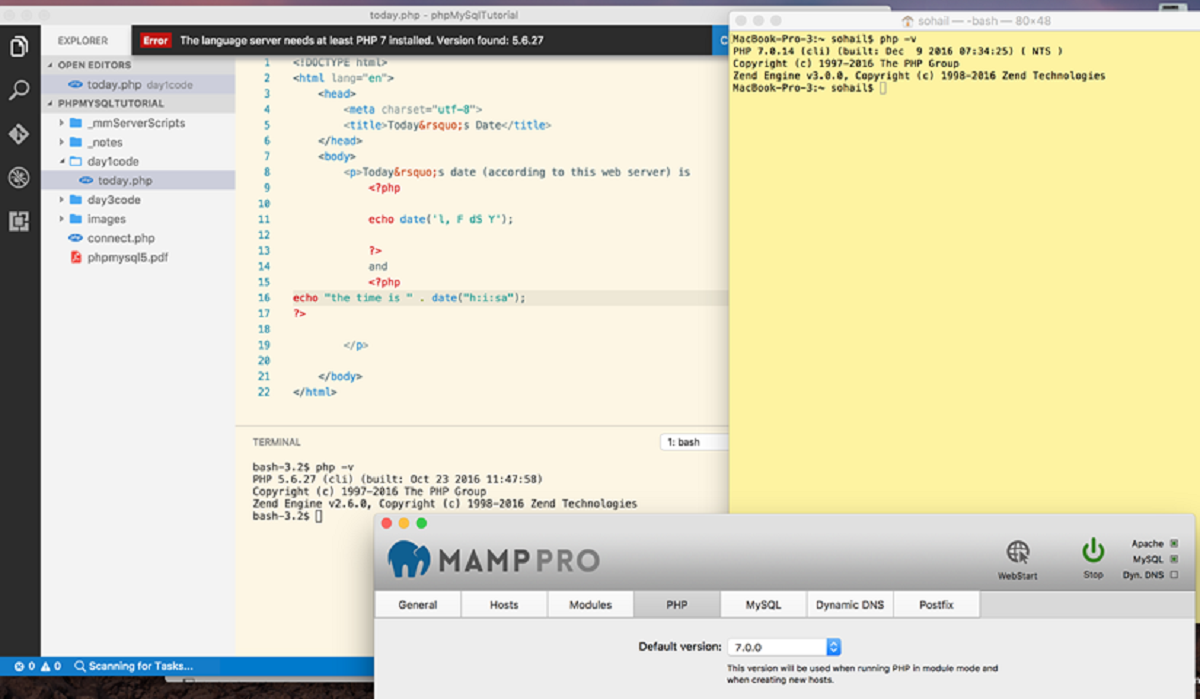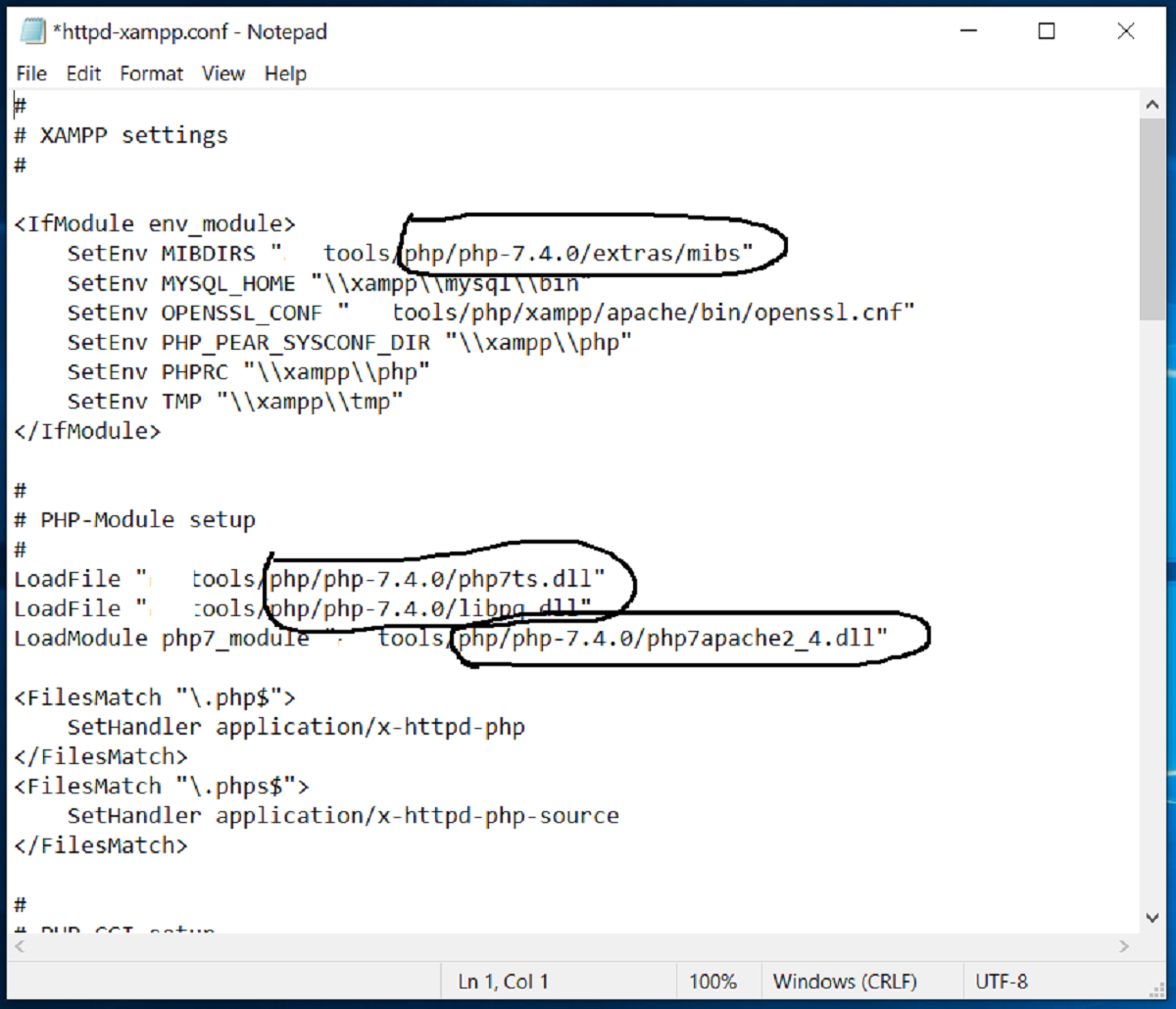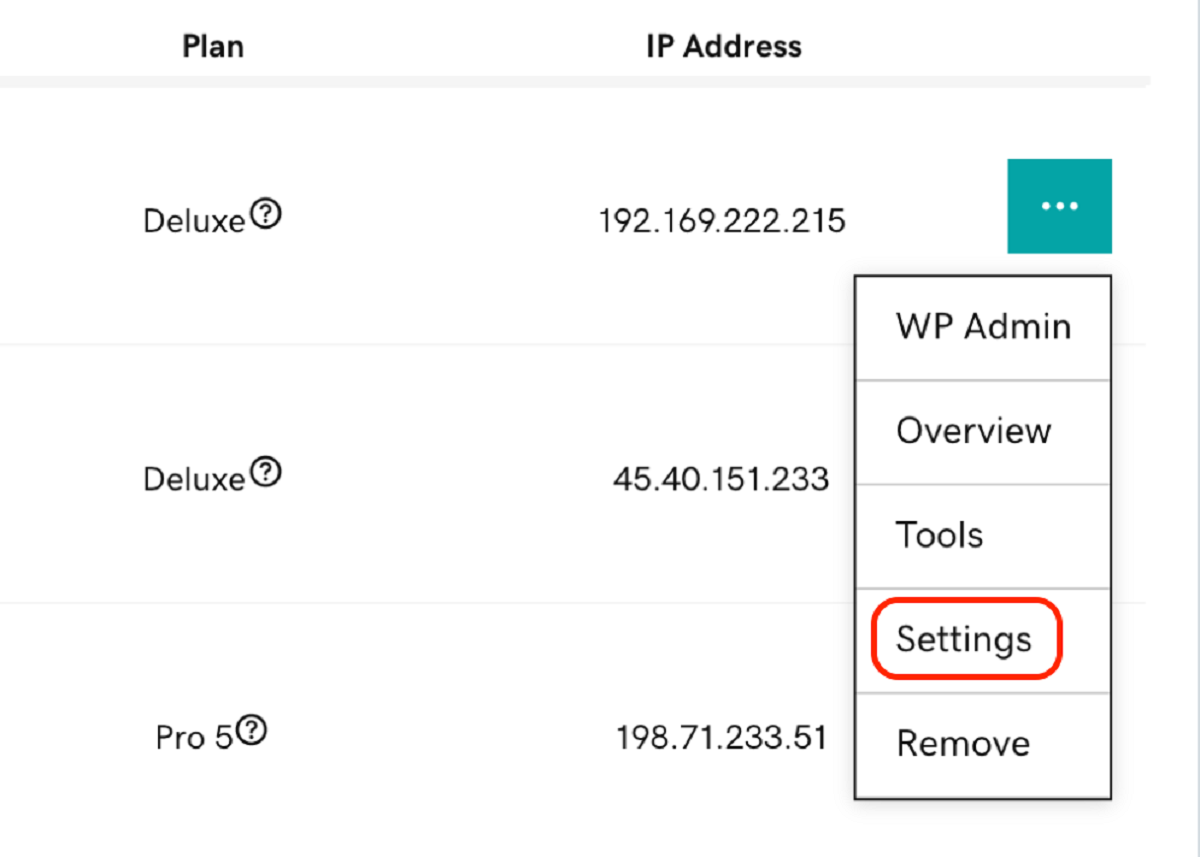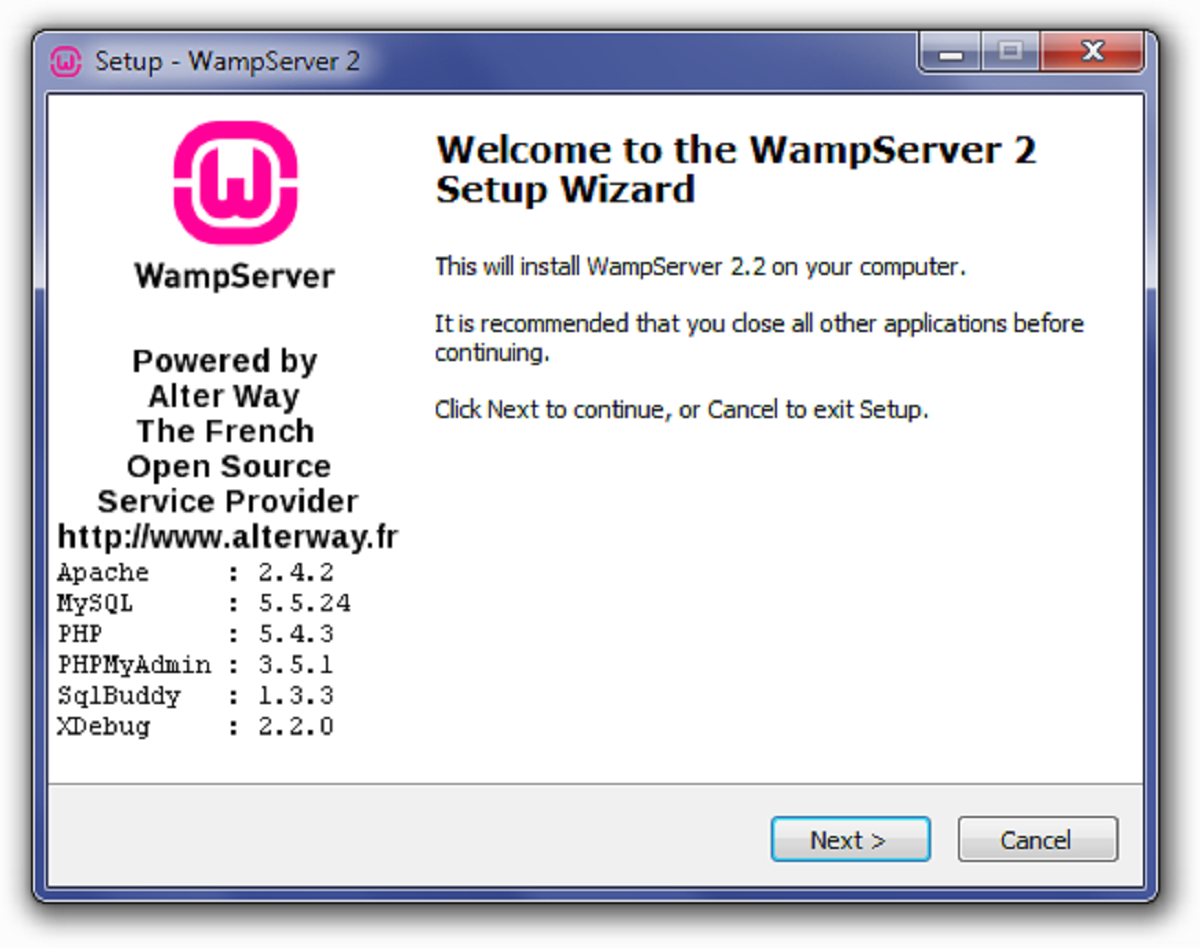Introduction
PHP, which stands for Hypertext Preprocessor, is a server-side scripting language that is widely used for web development. It is a versatile and powerful language that has gained immense popularity in the tech industry. PHP offers a wide range of features and functionality, making it suitable for various web-based applications and platforms.
With the rise of the internet and the increasing demand for dynamic and interactive websites, PHP has become an essential tool for developers worldwide. Its ease of use, flexibility, and vast community support have contributed to its widespread adoption.
In this article, we will explore the different uses of PHP in web development and beyond. From content management systems to e-commerce platforms and data processing applications, PHP has proven to be a valuable asset in creating robust and scalable web solutions. Whether you are a seasoned developer or someone new to programming, understanding the various applications of PHP can provide insight into its versatility and potential.
Throughout the sections, we will delve into the specific use cases of PHP and discuss how it enables the creation of dynamic and interactive websites. We will also touch upon its role in data processing, server-side scripting, and the integration of APIs and web services.
PHP has evolved over the years and continues to offer new features and enhancements, keeping pace with the evolving needs of the web development industry. By exploring its diverse applications, you can gain a deeper understanding of how PHP can empower you to build modern and engaging web solutions.
Web Development
One of the primary uses of PHP is in the field of web development. PHP provides developers with a robust and flexible platform to build dynamic and interactive websites. With its simplified syntax and extensive library of functions and frameworks, PHP makes it easier for developers to create web applications quickly and efficiently.
PHP integrates seamlessly with HTML, allowing developers to embed PHP code within HTML files. This feature enables the creation of dynamic web pages that can interact with databases, handle user input, and generate personalized content based on user preferences.
PHP also supports a variety of databases, such as MySQL, PostgreSQL, and SQLite, allowing web applications to store and retrieve data efficiently. Whether it is a simple contact form or a complex e-commerce website, PHP provides the necessary tools to handle data processing, form validation, and database interactions.
Furthermore, PHP offers numerous frameworks like Laravel, Symfony, and CodeIgniter, which provide a structured approach to web development. These frameworks simplify common tasks such as routing, authentication, and database management, speeding up the development process and improving code organization.
Another advantage of using PHP for web development is its compatibility with different operating systems and web servers. PHP can run on popular web servers like Apache and Nginx, making it accessible across various platforms. This versatility ensures that PHP-based websites can reach a broader audience and provide a consistent user experience regardless of the hosting environment.
Overall, PHP’s role in web development cannot be overstated. Its simplicity, flexibility, and extensive community support make it an ideal choice for building a wide range of websites, from simple blogs to complex enterprise applications. By harnessing the power of PHP, developers can create dynamic and interactive web experiences that engage users and drive business growth.
Content Management Systems (CMS)
PHP is widely used in the development of content management systems (CMS). CMS platforms provide a user-friendly interface for creating, managing, and publishing digital content on the web. They are essential for websites that require frequent updates and content modifications.
With PHP, developers can create powerful CMS frameworks that enable users to easily manage their website content without the need for technical expertise. PHP-based CMS platforms like WordPress, Joomla, and Drupal dominate the market due to their extensive plugin and theme ecosystems, as well as their user-friendly interfaces.
These CMS platforms offer a wide range of functionalities, including content creation, media management, user management, and search engine optimization. PHP allows developers to build custom modules and plugins to extend the standard functionality of the CMS, providing users with unlimited possibilities for customization and integration.
Moreover, PHP’s integration with databases allows CMS platforms to store and retrieve content efficiently. Content can be organized into categories, tags, and custom taxonomies, making it easier for users to navigate and search for specific information on the website.
PHP-based CMS platforms also offer robust security features to protect websites from vulnerabilities and malicious attacks. With regular updates and community support, PHP-based CMS frameworks ensure that websites remain secure and up-to-date with the latest security patches.
In addition to their user-friendly interfaces and extensive functionalities, PHP-powered CMS platforms benefit from a vast community of developers and contributors. This community actively creates and maintains themes, plugins, and extensions, expanding the capabilities of CMS platforms and providing developers with valuable resources and support.
Overall, PHP’s versatility and extensive community support make it an ideal choice for developing content management systems. PHP-based CMS platforms empower website owners to efficiently manage and update their content, create a seamless user experience, and maintain a secure and robust online presence.
E-commerce Platforms
PHP plays a vital role in the development of e-commerce platforms, providing the necessary tools and functionality to create robust and secure online shopping experiences. E-commerce websites require advanced features such as product catalogs, shopping carts, payment gateways, and order management systems, all of which can be efficiently built using PHP.
PHP offers various frameworks, such as Magento, WooCommerce, and OpenCart, that are specifically designed for e-commerce development. These frameworks provide a solid foundation for building scalable and customizable online stores, enabling businesses to showcase their products and sell them to a global customer base.
One of the key advantages of using PHP for e-commerce is its ability to integrate with popular payment gateways, such as PayPal, Stripe, and Braintree. PHP allows developers to seamlessly integrate these payment gateways into the e-commerce website, ensuring secure transactions and a smooth checkout process for customers.
Additionally, PHP’s database integration capabilities facilitate efficient inventory management, order tracking, and customer relationship management. E-commerce platforms built with PHP can handle large volumes of data, ensuring that product information, stock levels, and customer details are accurately stored and updated in real-time.
PHP-based e-commerce platforms also provide extensive options for customization and extension through plugins and themes. Businesses can tailor their online stores to match their branding, add new functionalities, and integrate with third-party services, enhancing the overall shopping experience for customers.
Furthermore, PHP’s performance and scalability make it an excellent choice for e-commerce platforms handling high traffic and transaction volumes. PHP’s ability to optimize database queries, cache data, and distribute resources effectively ensures fast and responsive online stores that can handle multiple simultaneous user interactions.
Overall, PHP’s versatility and vast ecosystem of frameworks and plugins make it an ideal choice for developing e-commerce platforms. By leveraging PHP’s rich feature set and customizable architecture, businesses can create secure and scalable online stores that provide a seamless shopping experience for customers around the world.
Social Media Platforms
PHP is widely used in the development of social media platforms, providing the backbone for creating engaging and interactive online communities. Social media platforms require robust functionality to handle user registration, profiles, friend connections, messaging, news feeds, and content sharing, all of which can be efficiently built using PHP.
PHP frameworks like Laravel and Symfony offer powerful tools for building social media platforms. These frameworks provide built-in authentication systems, secure password storage, and user management features, making it easier for developers to create secure and user-friendly social networking websites.
One of PHP’s strong suits is its support for database integration, allowing social media platforms to store and retrieve user profiles, posts, comments, and other related data. PHP’s compatibility with databases like MySQL and PostgreSQL ensures that social media platforms can handle high volumes of user-generated content efficiently.
PHP’s versatility enables developers to implement advanced features, such as real-time notifications, activity feeds, and messaging systems, which are crucial for providing a dynamic and interactive social media experience. PHP frameworks like Laravel offer libraries and extensions for incorporating these features seamlessly.
Moreover, PHP’s integration with libraries like GD allows developers to incorporate image manipulation and filtering capabilities into social media platforms. This enables users to upload, edit, and share images seamlessly within the social network, enhancing the visual appeal and engagement of the platform.
PHP also provides support for integrating with OAuth and other authentication protocols, allowing users to sign in to social media platforms using their existing accounts from popular services like Google, Facebook, and Twitter. This simplifies the onboarding process for new users and enhances the platform’s reach.
Furthermore, PHP’s performance optimization techniques, such as caching, code optimization, and efficient database queries, ensure the smooth functioning of social media platforms even under high user loads and heavy data processing.
In summary, PHP’s extensive functionality, support for database integration, and compatibility with frameworks make it an excellent choice for building social media platforms. Whether it’s creating user profiles, implementing real-time interactions, or facilitating content sharing, PHP provides the features and tools developers need to build engaging and interactive social networking websites.
Online Forums and Bulletin Boards
PHP is commonly used in the development of online forums and bulletin boards, providing the necessary functionality to facilitate discussions, user interactions, and information sharing. These platforms create virtual communities where users can engage in conversations, ask questions, and share their knowledge and experiences.
PHP frameworks like phpBB and Simple Machines Forum (SMF) offer comprehensive solutions for building online forums and bulletin boards. These frameworks provide features such as user registration, profile management, thread creation, post editing, and moderation tools, making it easier for developers to create robust and customizable forum platforms.
PHP’s integration with databases allows forum platforms to efficiently store and retrieve discussions, user posts, and other related data. This enables users to search for relevant information, follow specific threads, and receive notifications for updates, enhancing the overall user experience.
Additionally, PHP-based forum platforms provide various user engagement features, such as private messaging, user rankings, and reputation systems. These features encourage active participation and foster a sense of community among users, making the forum a valuable platform for knowledge sharing and networking.
PHP’s integration with HTML and CSS allows developers to create visually appealing and user-friendly forum interfaces. Customizable themes and templates can be implemented to match the branding and design preferences of the forum platform, providing a seamless and cohesive user experience.
Furthermore, PHP’s support for user authentication and authorization enables forum platforms to implement membership levels, user roles, and moderation systems. Administrators and moderators can manage user privileges, control content visibility, and enforce community guidelines, ensuring a safe and respectful environment for all participants.
PHP’s performance optimization techniques, including caching mechanisms and query optimization, are essential for ensuring fast and responsive forum platforms, even with a high volume of concurrent users and active discussions.
In summary, PHP’s extensive functionality, database integration, and compatibility with frameworks make it an excellent choice for developing online forums and bulletin boards. PHP-based forum platforms provide the tools and features necessary to facilitate discussions, encourage user engagement, and create thriving online communities. With PHP, developers can create dynamic, scalable, and user-friendly platforms that foster meaningful connections and knowledge sharing.
Data Processing and Manipulation
PHP is a powerful tool for data processing and manipulation, offering a wide range of features and functions to work with different data formats and sources. Whether it’s parsing CSV files, querying databases, or manipulating JSON data, PHP provides developers with the necessary tools to handle complex data processing tasks.
PHP’s integration with databases like MySQL and PostgreSQL makes it an ideal choice for retrieving, manipulating, and storing data. Developers can write SQL queries and execute them using PHP’s database connectivity functions, allowing for efficient data retrieval and manipulation.
Additionally, PHP provides built-in functions and libraries for processing and manipulating common data formats. For example, developers can use PHP’s CSV functions to read and write data from and to CSV files, making it easier to process large amounts of structured data.
PHP also supports XML processing through libraries like SimpleXML and DOMDocument. These libraries allow developers to parse XML data, extract information, and modify XML documents programmatically, facilitating the integration of XML data sources into applications.
Furthermore, PHP provides functions for decoding and encoding JSON data, allowing developers to work with JSON objects and arrays effectively. This makes PHP a suitable choice for building web APIs that communicate using JSON as the data interchange format.
In addition to handling structured data, PHP also offers functions for working with raw binary data and file operations. Developers can read and write binary files, manipulate file metadata, and perform file system operations using PHP’s file handling functions, providing a comprehensive solution for data processing and manipulation.
PHP’s versatility extends to data transformation and manipulation. Developers can utilize PHP’s string manipulation functions, regular expressions, and mathematical functions to transform and manipulate data in various ways. This flexibility enables developers to cleanse and transform data, perform calculations, and implement custom data processing logic as needed.
In summary, PHP is a powerful tool for data processing and manipulation, providing developers with a wide range of functions and libraries to work with structured and unstructured data formats. Whether it’s querying databases, parsing CSV files, manipulating JSON data, or performing data transformations, PHP offers the necessary capabilities to handle complex data processing tasks efficiently.
Command-line Scripting
PHP is not only limited to web development but also serves as a robust scripting language for command-line interfaces (CLI). With PHP, developers can write scripts that can be executed from the command line, allowing for automation, system administration tasks, and other command-line operations.
CLI scripting with PHP provides developers with the ability to perform various tasks, such as file manipulation, data processing, system management, and automation of repetitive tasks. This versatility makes PHP a valuable tool for developers, system administrators, and DevOps professionals.
PHP CLI scripting enables developers to create custom command-line tools tailored to specific needs. These tools can perform tasks like batch processing, data extraction and manipulation, file handling, and database interactions, allowing for efficient and streamlined workflows.
Furthermore, PHP CLI scripts can be used to automate tasks, such as backups, data synchronization, and scheduled maintenance. By leveraging PHP’s extensive library of functions and integrations, developers can develop robust and reliable automation scripts that save time and effort.
PHP CLI scripts can also interact with shell commands and external programs, allowing developers to combine the power of PHP with other command-line tools. This integration opens up possibilities for complex systems administration and automation workflows that involve multiple tools.
Moreover, PHP’s object-oriented programming capabilities make scripting more modular and maintainable. Developers can structure their scripts using PHP classes, making them reusable and easier to maintain and enhance over time.
PHP CLI scripts can also leverage the power of external libraries and frameworks, expanding the capabilities of command-line scripting. Libraries such as Symfony Console and Laravel Artisan provide a convenient and standardized way of building command-line interfaces with features like command arguments, options, and input/output formatting.
Overall, PHP’s versatility extends beyond web development into command-line scripting, making it a valuable tool for automating tasks, managing systems, and performing data processing operations. With PHP CLI scripting, developers can create custom command-line tools, automate repetitive tasks, and streamline workflows, improving productivity and efficiency in various software development and system administration scenarios.
Image and File Upload Systems
PHP is commonly used in the development of image and file upload systems, providing the necessary functionality to handle the secure and efficient transfer of files between clients and servers. These systems are essential for applications that require users to upload images, documents, and other files.
With PHP, developers can create robust file upload systems that validate and process user-submitted files. PHP offers various functions and methods to handle file uploads, including handling file size restrictions, MIME type validation, and storing files in the server’s file system or database.
PHP’s integration with HTML and web forms enables developers to create user-friendly file upload interfaces. By combining HTML’s file input element with PHP’s file handling functions, developers can easily handle file submissions from users.
PHP’s security features play a crucial role in image and file upload systems. It allows developers to validate and sanitize user-provided file names and ensure that uploaded files do not pose security risks. This includes enforcing file type restrictions, limiting file sizes, and implementing proper server-side validation.
Additionally, PHP provides image processing capabilities through libraries like GD and Imagick. These libraries enable developers to manipulate and process uploaded images, resizing, cropping, or applying filters and effects, enhancing the flexibility and functionality of image upload systems.
PHP’s support for file storage techniques, such as saving files in the server’s file system or storing them in a database, offers developers flexibility in managing uploaded files. They can choose the most suitable storage method based on factors like scalability, performance requirements, and ease of access.
Furthermore, PHP’s compatibility with popular cloud storage services, such as Amazon S3 and Google Cloud Storage, allows developers to securely store and retrieve files in distributed and scalable storage environments. This ensures the availability and reliability of uploaded files, even in high-traffic scenarios.
PHP’s database integration capability is valuable in file upload systems, as it allows developers to store file metadata, such as file names, file sizes, and upload timestamps. This metadata can be used for various purposes, such as tracking file usage, generating download links, and implementing access control mechanisms.
In summary, PHP’s extensive file upload and image processing functionality, combined with its security features, make it an excellent choice for developing image and file upload systems. By leveraging PHP’s capabilities, developers can create robust and user-friendly interfaces for handling file uploads, validate and process user-submitted files securely, and enhance the functionality of their applications. Whether it’s storing files in the server’s file system or using cloud storage services, PHP provides the necessary tools to create efficient and reliable file and image upload systems.
APIs and Web Services
PHP is widely used for building APIs (Application Programming Interfaces) and web services, providing the foundation for communication and integration between different software applications. APIs allow applications to interact with external systems, exchange data, and access functionality, expanding the capabilities and reach of software solutions.
With PHP, developers can create RESTful APIs that adhere to web standards and enable seamless integration with various platforms and programming languages. PHP frameworks like Laravel and Symfony provide built-in tools and components for building robust and efficient APIs, making it easier to handle authentication, routing, request handling, and response formatting.
PHP’s compatibility with various data formats, including JSON and XML, makes it a suitable choice for implementing web services that communicate using these formats. PHP can easily parse, generate, and process JSON and XML data, facilitating interoperability between different systems.
Furthermore, PHP’s support for HTTP methods, such as GET, POST, PUT, and DELETE, allows developers to create APIs that follow standard RESTful principles. This ensures consistency, scalability, and ease of integration, as APIs conform to well-known patterns and conventions.
In addition, PHP’s database integration capabilities make it easy to fetch and manipulate data from databases and expose it through APIs. This enables developers to create web services that provide access to structured data and perform CRUD (Create, Read, Update, Delete) operations.
PHP’s capability to interact with external APIs and web services further enhances its role in this domain. Developers can easily integrate third-party APIs into their PHP applications, allowing seamless integration with external services, such as payment gateways, social media platforms, and geolocation services.
Additionally, PHP provides authentication and authorization mechanisms, allowing developers to secure their APIs. This includes token-based authentication, OAuth integration, and role-based access control, ensuring that APIs are accessed by authorized users and protecting sensitive data.
PHP’s performance optimization techniques, such as caching, query optimization, and response compression, help improve the speed and responsiveness of APIs. This ensures that APIs can handle a large number of requests and provide timely responses to client applications.
In summary, PHP’s extensive capabilities, frameworks, and compatibility with various data formats make it a powerful choice for building APIs and web services. PHP’s support for standard protocols, integration with databases and external APIs, and security features enable developers to create robust and interoperable web services. Whether it’s developing RESTful APIs or integrating with external services, PHP provides the tools and flexibility to build efficient and scalable APIs and web services.
Web Scraping
PHP is a popular choice for web scraping, a process that involves extracting data from websites. Web scraping enables developers to gather information from various web pages, automate data collection, and integrate external data into their applications.
PHP provides a range of libraries, such as Goutte and Simple HTML DOM, that facilitate web scraping. These libraries offer convenient methods for navigating web pages, selecting HTML elements, and extracting data based on specific patterns or criteria.
With PHP, developers can send HTTP requests to target websites, retrieve the HTML content, and parse it to extract the desired data. PHP’s built-in functions and libraries enable the manipulation of HTML elements, extraction of text, retrieval of attributes, and traversal of website structures, making web scraping tasks more manageable.
Furthermore, PHP’s compatibility with regular expressions allows for powerful pattern matching and data extraction from web page content. Regular expressions can be used to identify specific patterns or formats within HTML content and extract valuable information, such as prices, product details, or contact information.
PHP’s database integration capabilities also play a significant role in web scraping. Extracted data can be stored in databases such as MySQL or PostgreSQL, enabling further processing, analysis, and integration into other applications. This allows developers to create customized data pipelines and workflows utilizing the scraped data.
In addition, PHP allows developers to implement techniques like login or session handling to scrape websites that require authentication. This opens up possibilities for scraping data from member-based websites or websites that have restricted access to specific users.
It is important to note that when scraping websites, developers should be mindful of legal and ethical considerations. Always respect website terms of service and robots.txt files, and ensure that the scraping process does not put a heavy load on the target website’s servers or violate any applicable laws.
Overall, PHP’s rich feature set, HTML parsing capabilities, and database integration make it a powerful tool for web scraping. PHP’s ability to retrieve web page content, manipulate HTML elements, and process the extracted data allows developers to automate data collection, integrate external information, and create valuable insights from web resources.
Real-Time Chat Applications
PHP is commonly used in the development of real-time chat applications, providing the necessary tools for creating interactive and dynamic communication platforms. Real-time chat applications enable users to engage in instant messaging, group chats, and real-time collaboration, enhancing communication and fostering connection.
PHP frameworks like Laravel and Symfony, combined with technologies like WebSocket and AJAX, enable the development of real-time chat applications. These frameworks offer built-in features and libraries for handling server-side logic, user authentication, message broadcasting, and handling real-time data exchanges.
PHP’s compatibility with databases, such as MySQL, PostgreSQL, and MongoDB, allows chat applications to store and retrieve messages efficiently. This ensures that conversations are seamlessly stored and accessible for users, even when they switch devices or log in from different locations.
In real-time chat applications, PHP plays a crucial role in handling WebSocket communication. PHP-based WebSocket servers allow bidirectional communication between the server and the client, facilitating instant message delivery and real-time updates. This ensures that users receive messages and notifications without the need for constant page refreshing.
Furthermore, PHP offers a wide range of libraries and tools for implementing features like typing indicators, message read receipts, and file sharing within real-time chat applications. These features enhance user engagement and provide a richer chat experience.
PHP’s support for user authentication and authorization ensures that real-time chat applications can securely authenticate users, manage user access rights, and safeguard sensitive information. This ensures that chat conversations are private and accessible only to authorized participants.
Moreover, PHP’s scalability and performance optimization techniques, such as connection pooling, caching, and load balancing, are vital for handling large volumes of concurrent connections and ensuring smooth chat experiences even under heavy traffic.
Additionally, PHP-based chat applications can easily integrate with other services and APIs, facilitating functionalities like chat bots, third-party integrations, and external content sharing. This enhances the flexibility and extensibility of chat applications, enabling seamless integration with other software systems or external services.
In summary, PHP’s compatibility with frameworks, databases, and real-time communication technologies makes it a suitable choice for developing real-time chat applications. PHP’s support for WebSocket communication, user authentication, and database integration enables the creation of interactive and dynamic chat platforms. With PHP, developers can build scalable, secure, and feature-rich real-time chat applications that enhance communication and collaboration among users.
Web-based Games
PHP can be used in the development of web-based games, offering the necessary functionality to create interactive and engaging gaming experiences directly in the browser. While PHP may not be the primary language for complex 3D games, it is well-suited for building simple and casual web-based games.
PHP’s integration with HTML, CSS, and JavaScript allows developers to combine server-side scripting with client-side interactivity. PHP can generate dynamic HTML content, handle game logic, and interact with databases, while JavaScript handles the front-end functionality and user interactions.
PHP’s support for storing and retrieving data from databases, such as MySQL or PostgreSQL, enables the persistence of game states, user scores, and player progress. Players can save their game state and resume their progress at a later time, enhancing the overall gaming experience.
Furthermore, PHP’s compatibility with various libraries and frameworks, such as jQuery and Phaser, makes it easier for developers to create interactive and dynamic gaming interfaces. These libraries provide pre-built components, animations, and game physics capabilities, speeding up the game development process.
PHP’s server-side capabilities allow developers to implement features like user authentication, game leaderboards, and multiplayer functionality in web-based games. PHP can handle user registration, manage user scores, and facilitate real-time communication between players, creating a more immersive and engaging gaming experience.
Additionally, PHP’s security features are essential for web-based games, as they help protect against cheating, unauthorized access, and data breaches. PHP provides methods to validate user input, handle session management, and prevent common security vulnerabilities, ensuring a secure gaming environment.
While PHP may not be suitable for high-performance gaming or resource-intensive graphics, it is still a viable choice for building casual web-based games that prioritize simplicity and accessibility. PHP’s versatility, database integration, and compatibility with front-end technologies make it a valuable tool for creating enjoyable and interactive gaming experiences directly in the web browser.
In summary, PHP’s integration with HTML, CSS, and JavaScript, its compatibility with libraries and frameworks, and its database integration capabilities make it a suitable choice for developing web-based games. PHP allows developers to create interactive and engaging gaming experiences, handle game logic, and interact with databases. Although PHP may not be optimal for complex games, it is a versatile language for building casual and accessible web-based games that can be enjoyed by a wide range of users.
Content Filtering and Moderation
PHP plays a crucial role in content filtering and moderation, providing developers with the necessary tools to ensure the safety, integrity, and appropriateness of user-generated content on websites and online platforms. Content filtering and moderation are essential for maintaining a positive user experience, preventing harmful or inappropriate content, and upholding community guidelines and policies.
PHP’s integration with databases allows developers to store and query user-generated content efficiently. Whether it’s user comments, forum posts, or user-submitted content, PHP provides the means to retrieve, analyze, and moderate this content effectively.
PHP’s string manipulation functions, regular expressions, and pattern matching capabilities enable developers to perform content filtering and moderation checks. This includes detecting and blocking offensive language, filtering out spam or inappropriate content, and enforcing community guidelines.
Furthermore, PHP frameworks like Laravel and Symfony provide built-in features and libraries for handling content moderation. These frameworks offer tools for user authentication, user roles, and content approval workflows. Developers can utilize these features to implement custom moderation processes and user permission settings based on their specific platform requirements.
PHP’s integration with third-party services and APIs enhances content filtering and moderation capabilities. Developers can leverage services like Google’s Content Safety API or open-source libraries like BadWordFilter to automatically scan and detect potentially harmful or inappropriate content.
In addition to automated content filtering, PHP allows for manual moderation by providing mechanisms for administrators and moderators to review and approve user-generated content. PHP-based systems can implement user flagging and reporting features, enabling community participation in the moderation process.
Moreover, PHP’s security features, such as input validation and protection against cross-site scripting (XSS) attacks, are crucial for content filtering and moderation. Proper input sanitization and validation help prevent the submission of malicious or harmful code, ensuring the integrity and safety of user-generated content.
PHP’s flexibility allows developers to customize and fine-tune content filtering and moderation mechanisms to suit their specific platform and community needs. By combining PHP’s features with machine learning algorithms, natural language processing, or sentiment analysis techniques, developers can enhance the accuracy and efficiency of content moderation processes.
In summary, PHP’s integration with databases, string manipulation functions, and support for third-party services makes it a powerful tool for content filtering and moderation. PHP’s security features and flexibility allow developers to implement effective content moderation workflows, ensuring the safety and appropriateness of user-generated content on websites and online platforms. By leveraging PHP’s capabilities, developers can create platforms that foster a positive and community-driven environment while maintaining the integrity of user interactions and content.
Web Analytics
PHP plays a significant role in web analytics, providing developers with the ability to collect, analyze, and interpret data to gain insights into website and application performance, user behavior, and marketing effectiveness. Web analytics allows website owners and administrators to make informed decisions and optimize their online presence.
PHP’s integration with databases, such as MySQL or PostgreSQL, enables the storage and retrieval of analytics data. Developers can capture and record various metrics, including page views, click-through rates, conversion rates, user demographics, and engagement metrics, and store this information in a structured manner.
PHP’s server-side capabilities allow for the processing and analysis of large volumes of data. By writing custom PHP scripts or utilizing analytics libraries, developers can calculate metrics, generate reports, and perform statistical analysis on the collected data.
Furthermore, PHP can integrate with third-party analytics tools and services, such as Google Analytics or Piwik, to capture and analyze data directly within PHP-based applications. These tools provide powerful visualization dashboards, tracking codes, and APIs that developers can leverage to access comprehensive analytics data without having to build the entire analytics infrastructure from scratch.
PHP’s versatility also enables developers to create real-time analytics dashboards for monitoring website performance and user behavior. By combining PHP with technologies like AJAX or WebSocket, developers can update analytics data and visualizations in real-time without requiring a full page refresh, providing up-to-date insights for website administrators.
Moreover, PHP-based web analytics systems can implement features like A/B testing, funnel analysis, and event tracking to optimize user interactions and conversions. These features allow website owners to experiment with different design elements, marketing strategies, and user flows, and analyze the impact on user behavior and conversions.
PHP’s security features are essential in web analytics to protect the privacy and integrity of collected data. Developers must ensure that analytics data is securely transmitted and stored, and that appropriate data anonymization techniques are applied to protect user privacy.
In summary, PHP’s ability to capture, process, and analyze data makes it a valuable tool for web analytics. PHP’s integration with databases, compatibility with third-party analytics tools, and server-side capabilities enable developers to collect, analyze, and visualize important website and application metrics. By leveraging PHP’s capabilities, website owners and administrators can gain insights into user behavior, improve website performance, and optimize marketing campaigns to enhance the overall online presence.
Email Processing and Sending
PHP is commonly used for email processing and sending, providing developers with the necessary tools to handle various aspects of email communication. Whether it’s sending transactional emails, creating newsletters, or implementing email automation, PHP offers a wide range of functionalities to facilitate efficient and reliable email delivery.
PHP’s built-in functions and libraries allow developers to send emails directly from their applications. With PHP’s mail() function or libraries like PHPMailer and SwiftMailer, developers can send emails using SMTP, sendmail, or other email delivery methods, ensuring that messages are delivered securely and reliably.
PHP’s support for email templates and MIME formatting enables developers to create professional-looking emails. By combining HTML, CSS, and PHP, developers can generate dynamic email content, customize the design, and personalize email messages based on recipient information or other variables.
Furthermore, PHP provides support for email parsing and processing. Developers can utilize PHP’s libraries, such as MimeMailParser, to extract data from incoming emails, handle attachments, and automate specific actions based on email content or headers.
PHP’s integration with databases allows developers to store and retrieve email templates, recipient lists, and email logs efficiently. This enables better management of email campaigns, tracking of sent messages, and provides the capability to ensure the delivery of emails to specific recipient groups.
In addition, PHP provides various mechanisms for handling email authentication, such as DKIM (DomainKeys Identified Mail) and SPF (Sender Policy Framework). These authentication methods help prevent email spoofing and enhance the deliverability of emails, ensuring that they are not flagged as spam by recipient servers.
PHP’s server-side capabilities allow for email scheduling and automation. Developers can utilize cron jobs or PHP script scheduling to send automated emails, create email reminders, or implement drip email campaigns, enhancing user engagement and communication.
Security is a critical aspect of email processing, and PHP provides features to ensure secure communication. PHP’s support for encryption protocols like SSL/TLS enables developers to establish secure connections when sending emails, safeguarding sensitive information and user privacy.
Overall, PHP’s extensive functionalities for email processing and sending make it a valuable tool for developers looking to create efficient and reliable email communication systems. With PHP, developers can send transactional emails, create personalized newsletters, automate email campaigns, and integrate email processing capabilities into their applications, contributing to effective and engaging communication with users and customers.

























